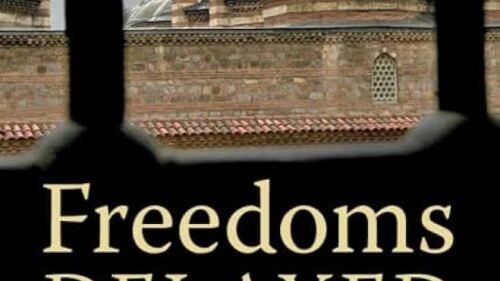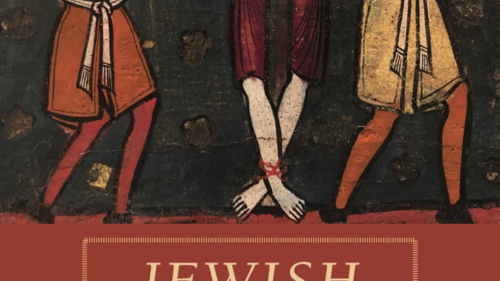For insight into what drives Iraqi Shi’ite passions, Jarjoura’s documentary film takes us inside their defining ritual, banned for thirty years under Saddam Hussein.
In The Road to Kerbala, the journey’s the thing, as we accompany pilgrims on a three-day, 100-kilometer trek from Baghdad to Karbala in April 2004, where they go to mourn the killing of the Prophet’s grandson Hussein in 680 C.E. Along the way, we hear rebel leader Muqtada al-Sadr at the moment of his ascent to prominence, witness a parade of his Jaysh al-Mahdi (Army of the Messiah), visit “the world’s largest cemetery,” and see one of the first stage productions in Iraq of the foundational event of Shi’ism.
The viewer also sees that when a people is besieged and isolated, their thinking and identity become limited. Iraq’s Shi‘ites have become defined by their faith and its lore; for example, a young man on crutches tells Jarjoura that he makes the long journey on foot “to defy America and Israel.”
Jarjoura, a Quebec filmmaker, fortunately chose Hamid al-Mokhtar, an independent-minded writer who understands these constraints, as her companion-guide. Mokhtar “intrigues” Jarjoura—reminds her of James Joyce—with the reflectiveness, goatee, cigarette holder, English cap, and writer’s jacket to match. He is even an enigma to some of his fellow trekkers, who look at him suspiciously, not sure he is Iraqi.
Mokhtar serves as a window to Iraqi Shi’ite views and devotion. In a detached manner, he explains the ritual breast-beating, the Shi’ites’ connection to sadness and victimhood, and their love and identification with Hussein.
The film is not analytical, and summation remarks at the end fall flat. What Jarjoura does well is capture the pilgrimage and those undertaking it by putting the viewer in the midst of an otherworldly, medieval setting. Jarjoura’s list of the countries from which the pilgrims hail omits India, which probably contains the wealthiest and most influential Shi’ite population. A more essential mistake is that the film identifies the pilgrimage as ‘Ashura, the tenth day of the month of Muharram, when Hussein was killed by the Umayyad caliph Yazid’s army; rather, it marks the ‘Arba’een commemoration of Hussein’s martyrdom. Also left unsaid is that the pilgrims Jarjoura accompanies are Sadr supporters. The subtitles are good, the one exception being a gap during a women’s gathering of recitations and lamentation.
The Road to Kerbala reflects Iraq’s complex state as the country emerges from its cave. Iraq’s Shi’ites, after centuries of marginalization, have arrived, and Jarjoura’s film shows them rising from their knees and taking their first tentative steps.



